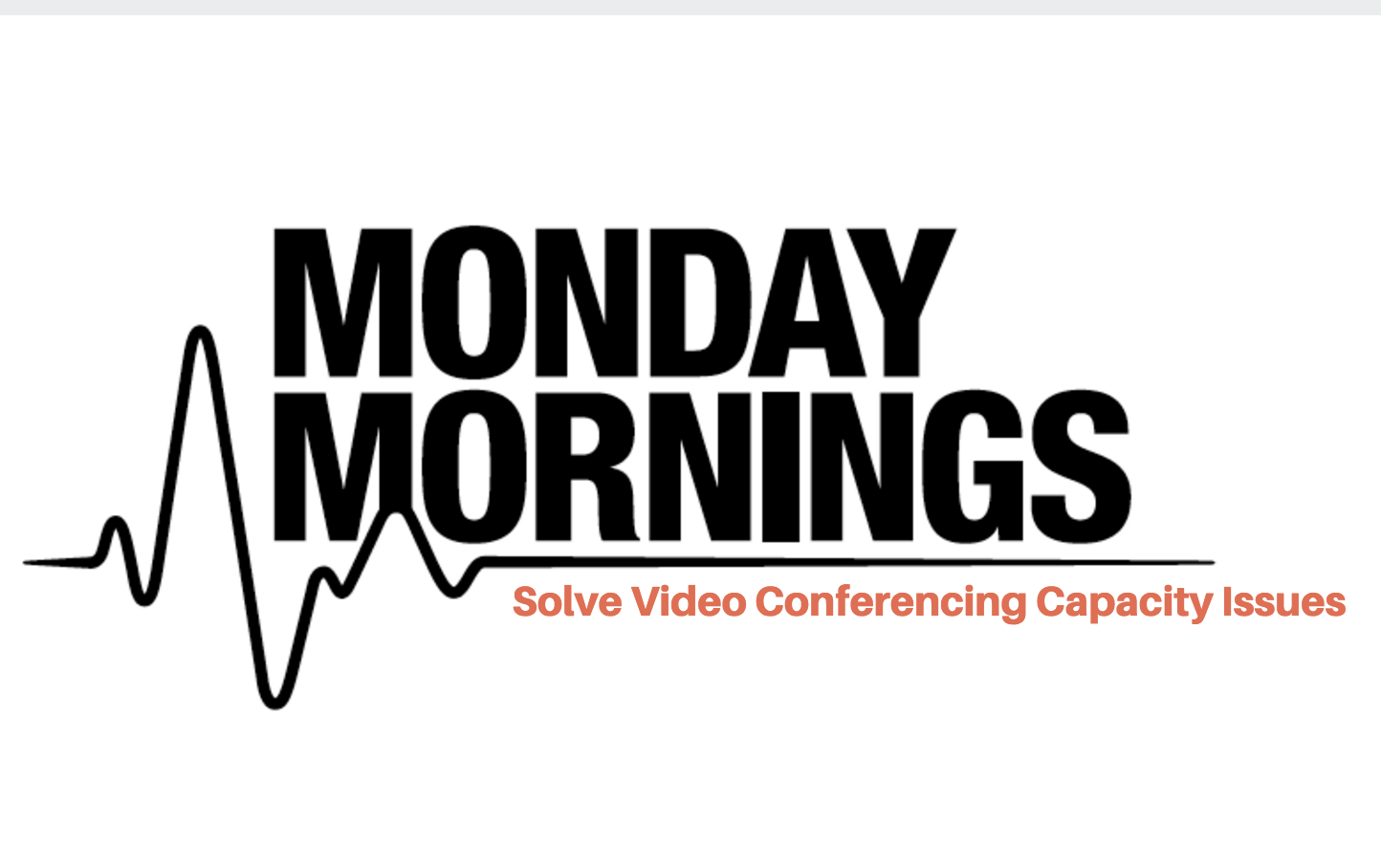
Mondays seem to be designated for peak IT issues, especially in video conferencing. In fact, I like to call it, “The Monday Morning Problem.” Capacity is in high demand, everything has mysteriously broken over the weekend, and users completely forget how to operate audio and video conferencing after two days off.

To help IT professionals have a pain-free Monday, we’ve completed a deep analysis of issue trends across 500 million video minutes, and figured out exactly is giving IT professionals a serious case of the Mondays, and provided solutions.
Monday Morning Video Conferencing Problem
So it never fails, right? At least one, large conference involving executives has a problem on Monday. Of course, this problem immediately gets accelerated and you have a fire drill on your hands. When you recommend hanging up and calling again, the everyone cringes (but it works more often than it should).
After crunching the numbers, we discovered an interesting trend. First, usage seems to peak on Mondays between 8:00am and 11:00am Central US time (GMT-6) for a majority of our customers. On average, this 3 hour peak is about 2x-3x the normal call volume of the entire work week!
Take a look at the yearly view of capacity by week, and you’ll see a pattern on Mondays.

Not seeing it? Here we’ve focused on the most active month and switched to daily view. You can’t miss the Monday spikes.

Once we took a look at the data and spoke with our customers, we realized the culprit was almost always weekly team meetings.
Monday Team Meetings Impact Capacity
Once we took a look at the data and spoke with our customers, we realized the culprit was almost always weekly team meetings.
Everyone wants to have their teams sync up on Monday mornings so they can align priorities and get the week started on the right foot (although some might argue that an hour-long meeting is not the most productive start). “What’s the problem with that,” you might ask? Physical meeting rooms and virtual meeting technologies have limits. Unlike physical rooms, you cannot check Outlook or look into rooms to see if they are being used. Most companies lack detailed knowledge of their capacity and usage, so there is literally no way of knowing they are out of virtual meeting rooms until calls start failing.
BONUS NOTE: If you want to find out when your capacity approaches these limits before calls start failing, read this.
Hold on, Lawrence, there is a solution.
There are potential solutions, and it doesn’t involve buying more capacity that then goes to waste for the week.
There are two options:
- Reschedule Meetings: Although it may feel impossible, this can be exceptionally effective if you happen to be providing “white glove” meeting services. Find the hosts for these meetings (call participants who want an hour back to their Monday morning will thank you), and ask them to change their meeting to either the afternoon. I recommend focusing on calls with international participants. Even Fast Company thinks you should have meetings in the afternoon. Also, Inc.com says Tuesday afternoon is better for a variety of reasons.
- Adjust Your Resources: With the introduction of cloud-based video conferencing solutions, a new type of capacity has emerged. Companies have started to offer cloud bursting of video and audio conferencing resources. By using some smart negotiating and a good knowledge of your usage patterns, shifting to the cloud will solve your call failure problems AND save money by reducing overall licensing.
Video Conferencing Resource Negotiation
The message you should focus on delivering as you approach meeting host is that you’re working to improve the experience of video conferencing for end-users. If everyone pitches in, you can eliminate reasons why calls are failing or behaving poorly. Productivity, communication, and end-user experience will improve, which means more video conferencing usage overall.
Everyone can finally have their Monday morning resource and capacity issues resolved. I mean, everyone will still dread Monday’s, but for different reasons.

Thanks for reading! If you have thoughts or want to share how your Monday IT issues are impacting your day (or company), go ahead and join the conversation below.



.png)
.png)